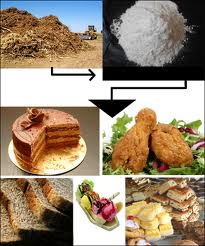Application of Cellulose Ether in the Food Industry
Hydroxypropyl methyl cellulose, hydroxy ethyl cellulose, and carboxymethyl cellulose are allowed as food additives in the United States, the European Union and many other countries. In the European Union, it is emphasized that L-HPC and hydroxy ethyl cellulose can be used as licensed thickeners and gelling agents. Methyl Cellulose, Hydroxypropyl methyl cellulose, HPC, HEMC and carboxymethyl cellulose have completely passed identification of the FAO / WHO Joint Expert Committee on Food Additives, and the acceptable daily intake (ADI ) is determined as 25mg/kg.
The U.S. Food Chemicals Codex listed the standards of carboxymethyl cellulose, hydroxypropyl methyl cellulose, ethyl cellulose as food additives. China has also established the quality standards for food-grade carboxymethyl cellulose. Food-grade carboxymethyl cellulose as an ideal food additive has also passed the permission of the Jews.
Cellulose ethers can be used as gelling agents in mixing food (such as methyl cellulose or hydroxypropyl cellulose in ice cream), thickeners in pie fillings and seasonings, and as suspending agents in fruit juice and dairy products. Carboxymethyl cellulose has the ability to inhibit crystallization, so it can be used in ice cream, juice, icing or frozen glue layer. The formulation of bread contains 1% of hydroxy propyl methyl cellulose, and gelation occurs in contact with hot oil, In this way, a protective layer can be formed at the edge of the frying food, greatly reducing the absorption of fat. Cellulose ethers have a variety of application modes in the food industry, and generally the total amount should be less than 0.5%.

